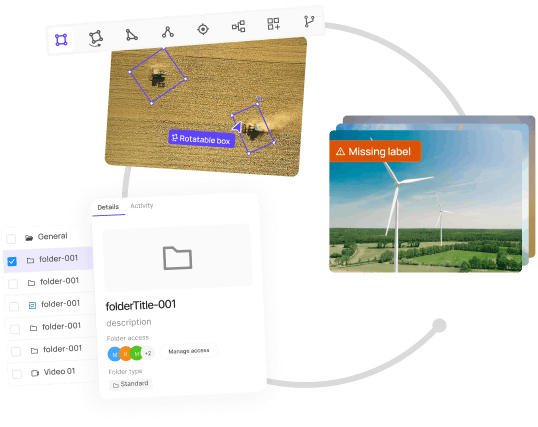One-Shot Learning
Encord Computer Vision Glossary
One shot learning is a type of machine learning (ML) that involves training a model to perform a task using a small number of examples. It is an important area of research in ML, as it has the potential to significantly reduce the amount of data and computational resources required to train a model.
One shot learning is particularly useful in scenarios where it is difficult or impractical to obtain a large number of labeled examples, such as in the case of rare or hard-to-obtain data. It is also useful in scenarios where the data is highly imbalanced, as it can help to prevent the model from being biased towards the majority class.
One shot learning has many practical applications, including image recognition, speech recognition, and natural language processing. For example, it can be used to train models to recognize new objects in robotics and autonomous vehicles, where labeled data is often scarce or difficult to obtain.

How do you do one-shot learning for computer vision?
There are several approaches that can be used for one shot learning, including metric-based approaches and optimization-based approaches. Metric-based approaches involve learning a distance metric that can be used to compare the similarity between different examples. Optimization-based approaches involve optimizing the model parameters to minimize the error between the predicted output and the true output.
The accuracy and efficiency of one shot learning algorithms are being improved through the development of new strategies and methods in this busy area of research. In situations where obtaining a large number of labeled instances is challenging or impossible, it is a crucial tool in machine learning (ML) and has the potential to dramatically reduce the amount of data and processing resources needed to train a model.
One of the key challenges in one shot learning is the ability to generalize from a small number of examples, which requires the model to learn representations of the objects that are robust to variations in appearance, lighting, and other factors. To achieve this, one shot learning models often use deep learning architectures such as siamese networks, matching networks, and prototypical networks, which are designed to learn invariant representations of objects.
Although one shot learning is still an active area of research, it shows great promise as a way to train models that can generalize well to new tasks with limited labeled data.
Read More
Discuss this blog on Slack
Join the Encord Developers community to discuss the latest in computer vision, machine learning, and data-centric AI
Join the community